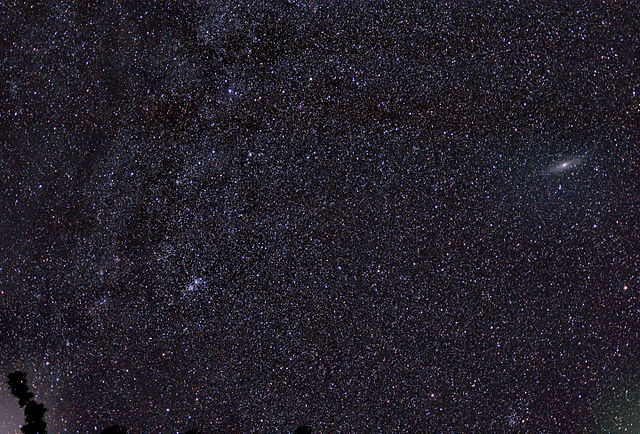Thanks to the help of SLU Professor Aileen A. O-Donoghue and Dominic Ford’s incredibly informative astronomical calendar, I may bring to you this week’s sky events:
Hello and welcome back from what was hopefully a restful break. It seems we will be finishing Nov. with the peak of the Orionid meteor shower, peaking on Nov. 28. The shower will be most visible around 2 a.m. when its “radiant point” is highest. All Ford means by this is that the shower is most visible when the constellation that it resides within is at its highest point in the sky. Think of the sun. Each day it will reach its highest point in the sky before sinking below the horizon. Everything else in the sky, from our perspective, moves the same way. This motion, an invisible arc that each visible space object makes across the sky, is often referred to as its right ascension and is measured in minutes and hours. Phone apps, like SkyView, will actually show you this path for each visible object like stars, meteors, planets, and even man-made satellites. However, satellites are different in that they also revolve around earth at various speeds and along different paths. As for other sky objects like stars, they are of course not actually moving, they just look like they are due to Earth’s own rotation.
The next noteworthy sky event will be Neptune’s end of its retrograde motion. It seems that retrograde is a term most people know today, in regards to maybe astrological meaning, but I think it might be interesting to discuss what is actually happening in the sky when someone mentions the term. It is an event that would baffle astronomers for generations. As I mentioned previously, objects in our sky have a pretty regular path that they follow, due to Earth’s rotation. This path is associated with what is called right ascension, likely for this very clever reason: generally, everything in the sky moves to the right. This makes sense. If everything up there only looks like it’s moving because of our own rotation, then they would all move in the same direction. However, this is not the case, and planets in retrograde motion are a great example of this. Basically, every now and then, the planets move backward for a short period and then return to their regular eastward motion. Back when we still thought the earth was the center of the solar system, this happening was especially confusing and required a lot of explaining. However, since the sun is actually at the center, and each planet has its own revolution around it, this was pretty easily explained. In short, what we see as a backward motion is actually the earth passing a slower moving planet in its revolution around the sun. This is pretty easily articulated but can be hard to actually imagine. The best comparison I can offer is the sensation of watching a slower-moving car as you pass it. Try to watch the next chance you get. At a certain point, the car will look like it’s moving backward as your perspective of it shifts from looking at it ahead of you to looking at it behind you. There are also great diagrams and resources online that break this down!
Finally, this week’s final event is a solar eclipse, on Saturday, Dec. 4, accompanied by the start of a new lunar cycle. At the top, I will mention that this eclipse will not at all be visible from the U.S. because it will be night here when it happens. However, it is still a very exciting event worth discussing. The total solar eclipse will be visible from Antarctica, but Ford also mentions a number of places that could see a partial, like the South Georgia and South Sandwich Islands with a 97 percent coverage of the sun. A solar eclipse only happens when there is a New Moon, and only under very special circumstances because the Sun, Moon, and Earth must be aligned in a straight line. Unfortunately, the moon is often on either side of this alignment and only crosses this Earth-Sun plane twice a month. We can only see the moon cross when it happens to coincide with a New Moon, which is why it is so rare and special.



